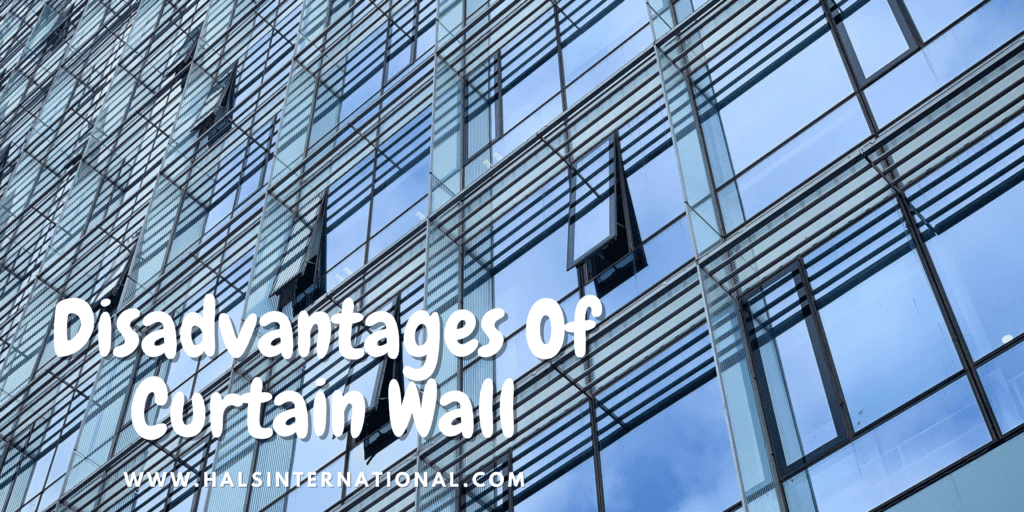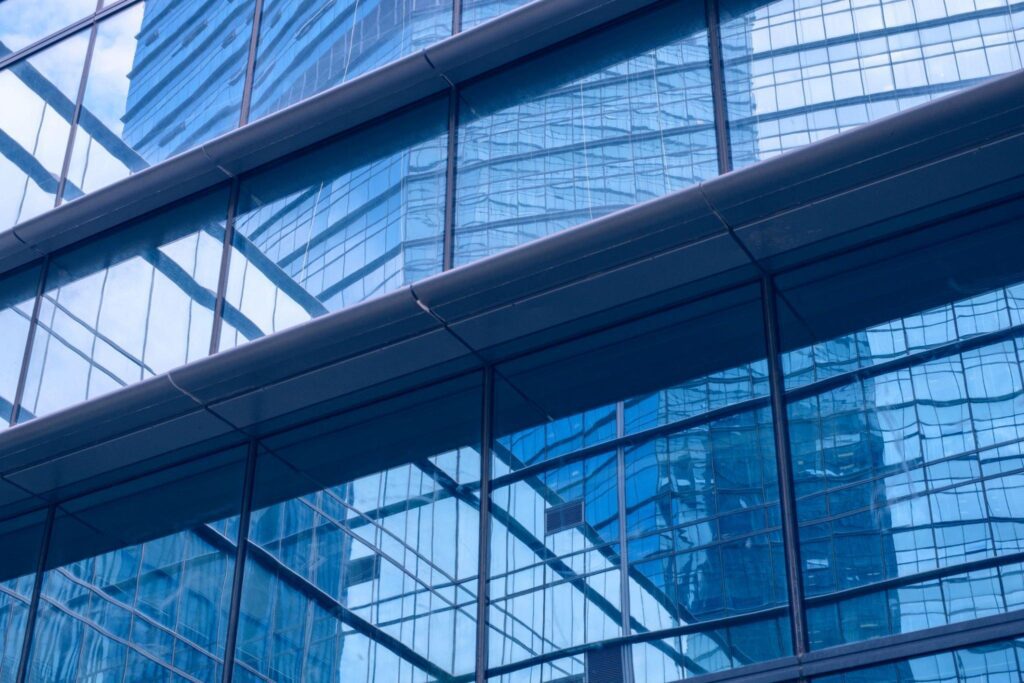
Table of Contents
Curtain walls are widely used in modern architecture to create aesthetically pleasing and functional building facades. However, like any construction system, curtain walls come with their own set of disadvantages. In this article, we will explore the various drawbacks associated with curtain walls, ranging from thermal insulation issues to structural limitations and maintenance challenges. By understanding these disadvantages, architects, engineers, and building owners can make informed decisions regarding the use of curtain walls in their projects.
Curtain walls are non-structural building enclosures that are primarily designed to provide weather protection and enhance the visual appeal of a building. They are typically composed of lightweight materials such as glass, aluminum, or steel and are installed on the exterior of a building’s structural framework. While curtain walls offer several benefits, it is crucial to be aware of their disadvantages to ensure optimal building performance and long-term durability.
Definition Of Curtain Wall
A curtain wall is a vertical building enclosure consisting of glass panels, metal framing, and other components that are assembled to create a continuous surface. Unlike traditional load-bearing walls, curtain walls do not carry any structural load. Instead, they rely on the building’s framework or structural support system to bear the weight of the structure. This design approach allows for greater design flexibility and the creation of striking architectural features.
Here are some of our high quality products:
Contact Us For Unique Products And Services
Importance Of Curtain Walls in Architecture
Curtain walls play a significant role in modern architecture, offering numerous advantages such as maximizing natural light, providing panoramic views, and creating a sense of transparency. They allow architects to design buildings with large glazed areas, enabling occupants to connect with the surrounding environment while maintaining a comfortable indoor climate. Curtain walls also contribute to energy efficiency by reducing the need for artificial lighting and enhancing thermal performance.
Lack Of Thermal Insulation
One of the primary disadvantages of curtain walls is their limited thermal insulation properties. Compared to traditional solid walls, curtain walls have thinner profiles and a higher proportion of glazing. This can lead to increased heat transfer, resulting in higher energy consumption for heating and cooling. To address this issue, additional insulation materials and techniques must be incorporated into the design to improve energy efficiency and occupant comfort.
Limited Structural Strength
While curtain walls provide a lightweight and visually appealing solution, they have limited structural strength compared to load-bearing walls. Curtain walls rely on the structural support system of the building, and their main function is to resist wind loads and provide weather protection. It is essential to carefully consider the structural requirements and ensure proper coordination between the curtain wall system and the building’s structural framework.
Potential For Water Leakage
Water leakage is a common concern with curtain walls, especially if proper installation and maintenance measures are not followed. Curtain walls are designed to be weather-resistant, but without proper detailing, seals, and periodic inspections, water infiltration can occur, leading to damage, mold growth, and compromised indoor air quality. Regular inspections, maintenance, and proactive repairs are necessary to prevent water leakage issues.
Higher Installation And Maintenance Costs
Curtain walls tend to be more expensive to install and maintain compared to traditional wall systems. The complexity of design, specialized materials, and skilled labor required for curtain wall installation contribute to higher initial costs. Additionally, ongoing maintenance, such as cleaning, sealant replacement, and repairs, is necessary to ensure the curtain wall’s longevity and performance. These maintenance activities can add to the overall life-cycle costs of the building.
Reduced Design Flexibility
While curtain walls offer design flexibility in terms of creating unique and visually stunning facades, they can also limit architectural design options in other aspects. For example, the placement of windows, doors, and other openings may be restricted due to the curtain wall system’s structural requirements. Architects need to carefully consider the balance between aesthetics and functional requirements to achieve the desired design intent.

Difficulties In Repairs And Modifications
In case of damage or the need for modifications, curtain walls can pose challenges. Unlike traditional walls, which can be easily repaired or modified, curtain walls often require specialized expertise and materials for repairs. This can result in longer downtime and higher costs for addressing issues or making alterations to the curtain wall system. Proper planning and consideration of potential future changes are crucial to mitigate these difficulties.
Susceptibility To Wind And Earthquakes
Due to their lightweight nature, curtain walls are more susceptible to wind loads and vibrations caused by earthquakes. Adequate design and engineering considerations, such as selecting appropriate materials, providing structural support, and implementing proper anchoring systems, are necessary to ensure the curtain wall’s performance under these dynamic forces. Failure to address these considerations may lead to structural failures or compromised building integrity.
Risk Of Glass Breakage
Curtain walls often rely on large glass panels, which can be vulnerable to breakage due to impact or other factors such as thermal stress. Glass breakage not only poses a safety risk but also requires immediate repairs or replacement to maintain the curtain wall’s integrity and aesthetics. The use of laminated or tempered glass and the inclusion of safety features such as protective films or barriers can help mitigate the risk of glass breakage.
Increased Construction Time
The installation of curtain walls typically requires specialized skills and coordination with other trades involved in the construction process. The intricate detailing, precise measurements, and careful installation can add time to the overall construction schedule. Delays in curtain wall installation can impact the project timeline and potentially result in additional costs. Effective project management and coordination among all stakeholders are vital to minimize construction time.
Environmental Concerns
Curtain walls, especially those made primarily of glass and metal, can have environmental implications. The production of glass and aluminum involves significant energy consumption and carbon emissions. Additionally, the limited thermal insulation properties of curtain walls can contribute to higher energy consumption and greenhouse gas emissions for heating and cooling purposes. Balancing the aesthetic appeal of curtain walls with environmental considerations is crucial for sustainable building design.
Conclusion
While curtain walls offer numerous advantages in terms of aesthetics and functionality, it is important to consider their disadvantages before incorporating them into building designs. From thermal insulation limitations and structural challenges to maintenance costs and environmental concerns, understanding the drawbacks of curtain walls allows for informed decision-making and the implementation of appropriate design strategies to mitigate these disadvantages. For more informational article like these you can visit hals international.
Curtain walls can be used in a wide range of building types, but their suitability depends on various factors such as structural requirements, design intent, and project budget. Consulting with architects and engineers can help determine the appropriateness of curtain walls for a specific project.
Curtain walls alone may not provide sufficient sound insulation. However, additional soundproofing measures such as acoustic glazing or insulation materials can be incorporated into the curtain wall system to improve sound insulation performance.
Curtain walls should be inspected and maintained regularly, typically on an annual basis. However, the frequency may vary depending on factors such as climate, exposure to environmental elements, and the specific requirements of the curtain wall system.
Retrofitting or modifying curtain walls can be challenging and may require specialized expertise. It is advisable to consult with professionals experienced in curtain wall systems to determine the feasibility and potential implications of retrofitting or modifications.
Some alternative building enclosure systems to curtain walls include precast concrete panels, brick or masonry walls, and insulated metal panels. The choice of the building enclosure system depends on various factors such as design requirements, budget, and project-specific considerations.
